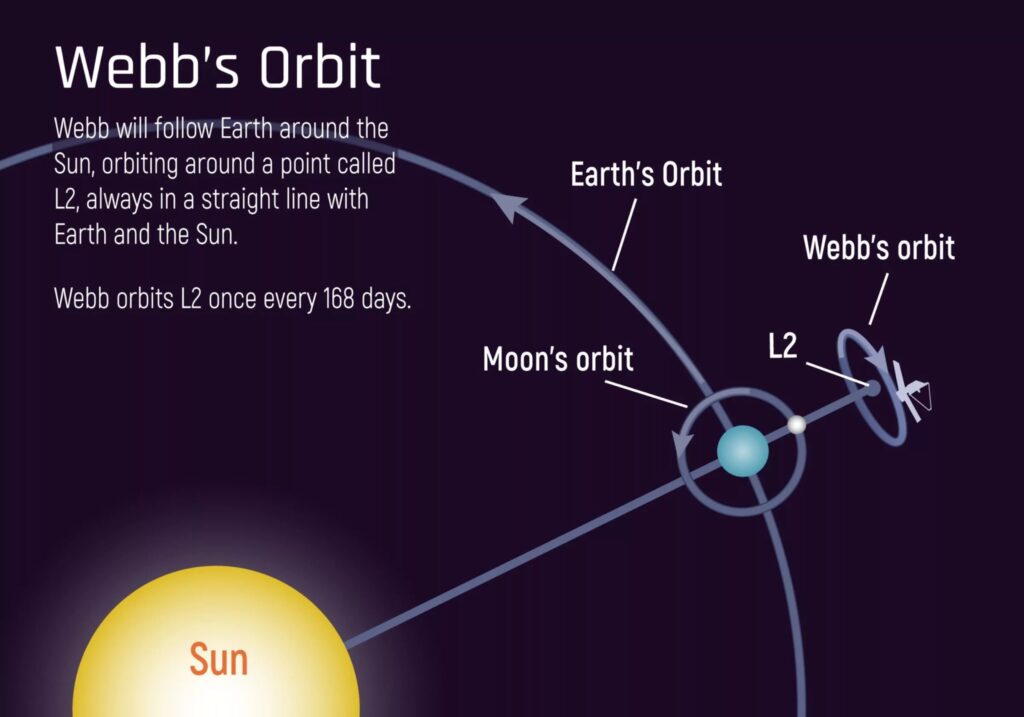It all started with Galileo making one of the first telescopes and changing the view of the church and the world, the father of modern observational astronomy. Today, humans having the urge to look back in time, to ask our questions of our own origin, the earliest stars, the first formations galaxies, and the creation of the universe itself is the uttermost curiosity we all seek. We are the species of present times, we want to know what was it like when the time began itself? This Christmas, we launched the most expensive and breakthrough telescope of mankind, the $10Bn James Webb Space Telescope (JWST).

Almost 25 years, were spent in the construction of this time machine, the telescope is the most difficult telescope ever built, the successor of the Hubble Space Telescope (HST). The telescope is made of two mirrors; primary being 6.5 meters of 18 hexagonal, segmented gold-plated beryllium mirrors and secondary being beryllium of rounded shape, unlike the primary mirror. The reason that every mirror is 0.12 ounces gold-plated is to increase the reflection of mirrors as naturally, the beryllium doesn’t have very efficient reflecting characteristics. So, that is what the JWST’s camera would capture or see.


The sensitivity of JWST can be realized that it contains a huge 22 by 10 meter cover of Kapton Sun-Shield, as the eyes of the telescope will be observing the infrared wavelength, which requires protection from the sun, earth, moon, and its own heat radiation, for cool and smooth operations. The observatory will remain in shadow all the time, for efficiently collecting the light from the deep space.

Interestingly, if we compare the JWST with its predecessors; Hubble and Spitzer, the JWST will observe the universe in a different wavelength of the electromagnetic spectrum. Hubble operated in the visible spectrum, Spitzer was in far-infrared-near but JWST will observe the universe from slight visible to whole to mid-far-infrared (Ranging from 0.6 – 28.3 microns). This is due to the conversion of wavelengths of the oldest objects within the universe, as with time the wavelength increases to what we call “redshift”. It’s for what began in the universe as blue light, would reach us as invisible infra-red radiation.

Sophisticatedly, the telescope will be operating in less than 45 degrees Celsius but above absolute zero – so that its own heat does not interfere for us to detect the most fainted stuff in the space, hence with its shield, it will live in ice-cold darkness.

The telescope has to go through immense challenges once, it sits on the huge Ariane -5 rocket from getting folded to function in space, it has to reach its orbiting/working position, which is Lagrange point – 2, a point in space where the gravity of the sun and earth-moon system balances each other so that it can have its shield facing the sun – this is a distance of around a million miles away. According to NASA, there are almost 344, possibilities of critical-single points of failure for the JWST before it reaches L2. It will take around 29 days to reach there and then undergo the unfolding of mirrors and instruments, optical aligning, testings, and calibrations, from now it will begin observations of the universe in around six months, we can unravel the secrets and unknowns.

It’s worth remembering that the JWST was supposed to launch a decade ago in 2010, but delayed till 24th Dec 2021, its constructions and testing went huge failures, many new technologies were invented in this struggle of mankind, which raised huge questions even on its name and the delays made the space community exhausted, but people argue that it happened the same with its predecessors – Hubble, but it was all worth it, Hubble changed our view of the universe, and gave us unimaginable knowledge and data, a lot has to be remeasured with JWST, the earliest stars – which were thought to be made of -hydrogen and helium only, the first galaxies, the new value of the Hubble constant which gives us the expansion rate of the universe, a lot of new science has to be done, the studies on the dark matter. Finally, we are now waiting for the JWST’s results as it was the best Christmas and new year gift from science to humanity.

Massive efforts were made by NASA, ESA, and CSA as thousands of scientists, engineers, and technicians from 14 countries contributed to build, test, and integrate JWST. In total around, more than 250 different companies and universities participated from all over the world. It’s an international collaboration. Starting from the launch site repeating ‘nominal’ during the launch of the JWST, confirming that everything is going as planned till the Arian-5 rocket’s fairing is released and JWST starts heading toward its destination.
Also Read: WHAT’S THE WORTH OF LIFE FOR ZOO ANIMALS?

Fouz Siddiqui is a writer, academic and scientific management person. Presently, he is a Co-founder and Chief Information Officer at Scientia Magazine. As CIO, he oversees the implementation and strategization of Scientia’s technological and scientific vision. Concurrently, In academia, he holds a Lecturer and QM position at ATH – IST. As an academic, his research interests are Exoplanetary Sciences within Astronomy. Furthermore, he also works with Kainaat Studios, as its Manager of Science Outreach.

